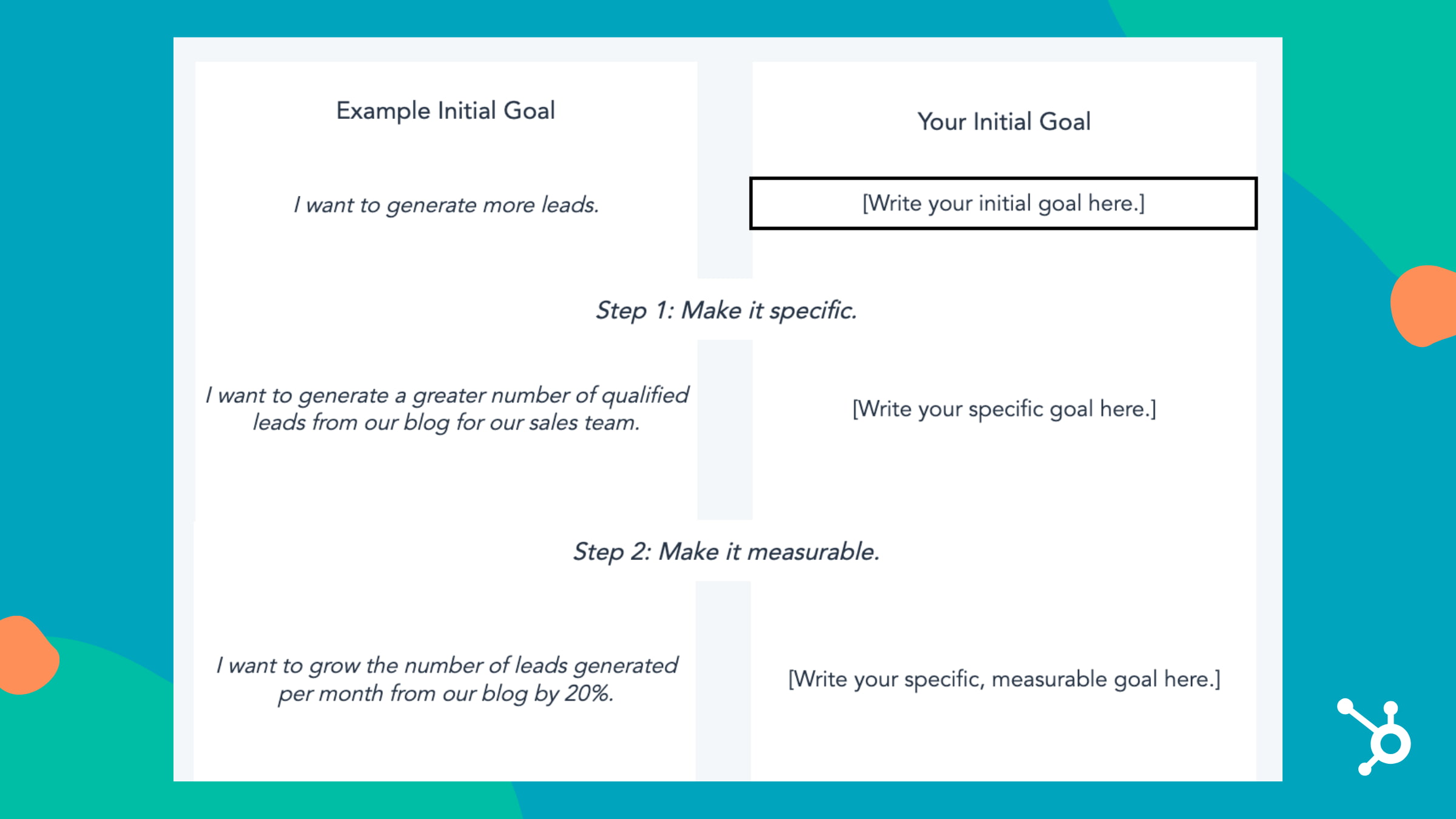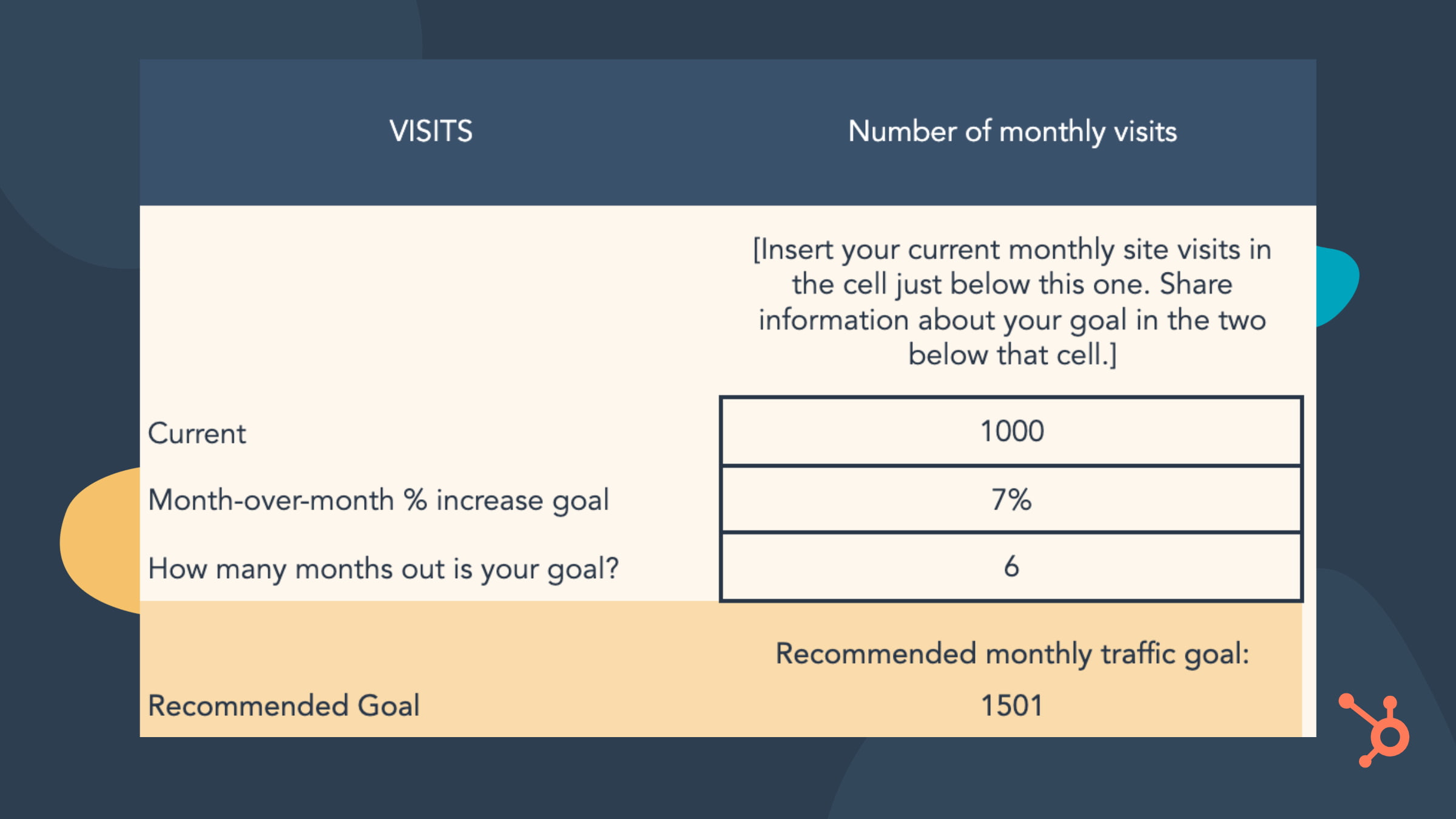- Like
- SHARE
- Digg
- Del
- Tumblr
- VKontakte
- Flattr
- Buffer
- Love This
- Save
- Odnoklassniki
- Meneame
- Blogger
- Amazon
- Yahoo Mail
- Gmail
- AOL
- Newsvine
- HackerNews
- Evernote
- MySpace
- Mail.ru
- Viadeo
- Line
- Comments
- Yummly
- SMS
- Viber
- Telegram
- JOIN
- Skype
- Facebook Messenger
- Kakao
- LiveJournal
- Yammer
- Edgar
- Fintel
- Mix
- Instapaper
- Copy Link
Accomplishing your goals is an incredibly gratifying feeling.
However, it can sometimes be challenging to get that feeling, as achieving your goals takes time, effort, and a structured process. This is why it’s important to create plans of action for meeting the goals that will help you stay motivated and ensure you’re on the right path.
In this post, we’ll go over a goal-setting worksheet created by HubSpot to help you outline your goals with the SMART framework and create a plan for achieving them. The template is broken down into relevant sections to help you through the process, and if you download it, you can follow along throughout the post.
Goal Setting Steps
1. Identify your initial goal.
The first step of the process is to simply identify what your goal is. It doesn’t have to be convoluted, just merely the objective you’re hoping to achieve. For example, if you’re hoping to grow your website, your baseline goal could be “I want to generate more site traffic.”
2.Define your SMART goals.
The second step in the process is to use the SMART framework to elaborate your goals to ensure that they’re clear, measurable and that the process will help you get there. Here are is what each of the element in the acronym stands for:
- Specific: A specific goal clearly outlines what you’re hoping to improve. If you share your specific goals with your team, it should be clear what your intention is.
- Measurable: Making your goal measurable means attaching numbers to your objective that will help you understand what you have to meet, track your progress, and see how long it will take you to reach your end goal.
- Attainable: Making sure that your goals are attainable means that they are realistic and that you have a chance of achieving them. Your goal is not too out of left field or so unrelated to your current practices that you wouldn’t be able to succeed.
- Relevant: Ensuring that your goal is relevant involves answering the question of “Why are you setting the goal that you’re setting?” Your goal should directly relate to your business’ needs and help your business grow.
- Time-Bound: The final aspect of your goal-setting process is to set a timeline. It helps you understand what your schedule should be and stay on track in terms of achieving your ultimate goal.
Goal Setting Template
It’s always helpful to have a worksheet guide you through your process, and the image below is an example.
Once you’ve finished defining your goals, the next step is to calculate your targets so you know what your final numbers should be and so you can plan your process accordingly, so you’re able to meet those final numbers.
2. Calculate your goal outcomes.
The most challenging part of your plan might be coming up with numerical targets that coincide with achieving your goals. You can just say, “We want to increase blog leads by 25%,” but what would the 25% increase be in numerical form?
When you have these numbers, you can set milestones for yourself and monitor your progress and make changes along the way if necessary.
The image below is an example of a SMART goal calculation.
3. Evaluate your SMART goals.
The template’s final step is to evaluate your goals, which helps you anticipate possible roadblocks and develop action plans for dealing with them. If you have multiple goals, aim to ask these questions for each one that you have:
- What is your SMART marketing goal?
- Do you feel that this goal is realistically attainable in the time frame you’ve set?
- How many hours per week can you dedicate to achieving your goal/your goal process?
- What is the biggest challenge preventing you from achieving this goal? What are possible challenges you may face in achieving this goal? What is the biggest roadblock(s) to achieving this goal?
- What three steps can you take to reduce or remove that challenge and succeed in reaching this goal?
All in all, following this framework makes your goals explicitly clear for yourself and helps you communicate their importance to all necessary stakeholders, so everyone is on the same page. To get started, download our template for free and start achieving your goals.
Originally published Jun 25, 2021 7:00:00 AM, updated June 25 2021






